Sedna is a Trans-Neptunian Object. Here's what an artist thinks Sedna might look like.
Click on image for full size
Image courtesy NASA/JPL-Caltech/R. Hurt (SSC-Caltech)
Trans-Neptunian Objects (TNO)
There are lots of small worlds at the edge of our Solar System. They are made of ice and rock. They are further away from the Sun than most planets. They are further away than the 8th planet, Neptune. They are called Trans-Neptunian Objects (or TNOs for short).
Some TNOs are only a little farther out than Neptune. They are in an area called the Kuiper Belt. It is sort of like the asteroid belt. They are called Kuiper Belt Objects (or KBOs for short). The planet Pluto is actually a Kuiper Belt Object. So is Quaoar.
Some TNOs are much, much further away. They are way out past Neptune. They orbit in an area called the Oort Cloud. Sedna might be from the Oort Cloud.
Some objects are in between the Kuiper Belt and the Oort Cloud. 2003 UB313 is a TNO that was discovered in 2005. Its nickname is "Xena". Xena might be bigger than Pluto. Xena has a strange orbit. Its orbit is in between a Kuiper Belt orbit and an Oort Cloud orbit.
Most comets come from the Oort Cloud and the Kuiper Belt.
You might also be interested in:
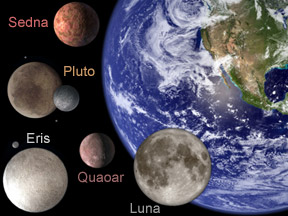
Do you know what a planet is? Guess what... astronomers are not quite sure what a planet is! Mercury, Venus, Earth, and Mars are the planets closest to the Sun. They are definitely all planets. They are
...more
Pluto is a frigid ball of ice and rock that orbits far from the Sun on the frozen fringes of our Solar System. Considered a planet, though a rather odd one, from its discovery in 1930 until 2006, it was
...more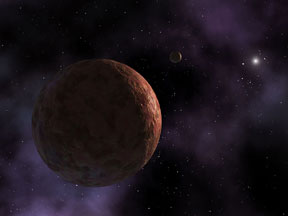
Astronomers have found a new object in our Solar System. The new object is named Sedna. Astronomers are calling Sedna a "planetoid". A planetoid is smaller than a planet but bigger than asteroids or comets.
...more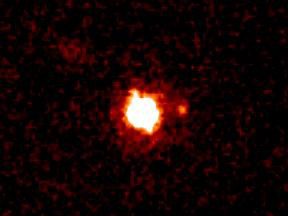
Eris is a dwarf planet in our Solar System. Eris is a lot like Pluto, which is also a dwarf planet. Eris and Pluto are both very far from the Sun. They are both very, very cold. Eris was discovered in
...more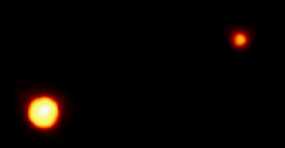
Pluto has been officially demoted from its status as a planet. The International Astronomical Union (IAU), at a meeting in August 2006, voted on their first "official" definition of a planet.
...more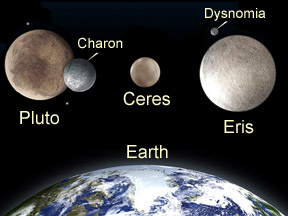
In 2006 the International Astronomical Union (IAU) approved a new classification scheme for planets and smaller objects in our Solar System. Their scheme includes three classes of objects: "small solar
...more
There are lots of small worlds at the edge of our Solar System. They are made of ice and rock. They are further away from the Sun than most planets. They are further away than the 8th planet, Neptune.
...more













